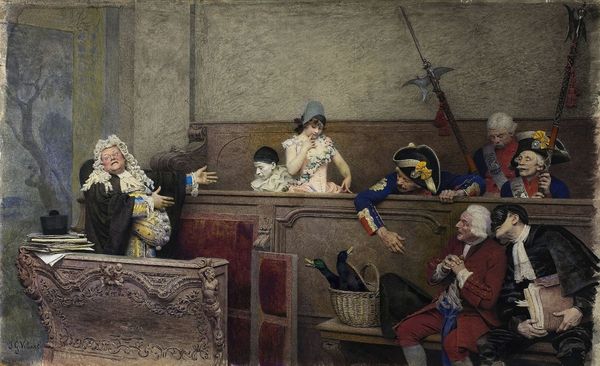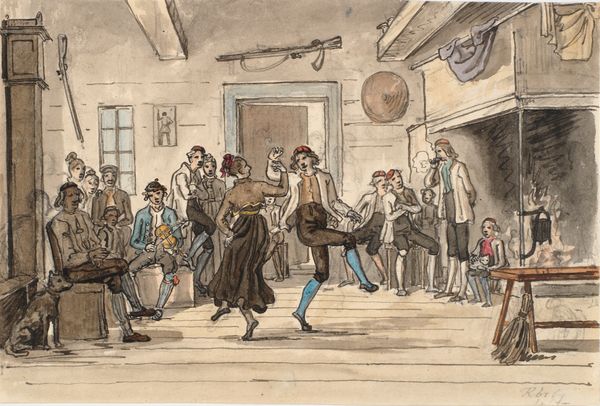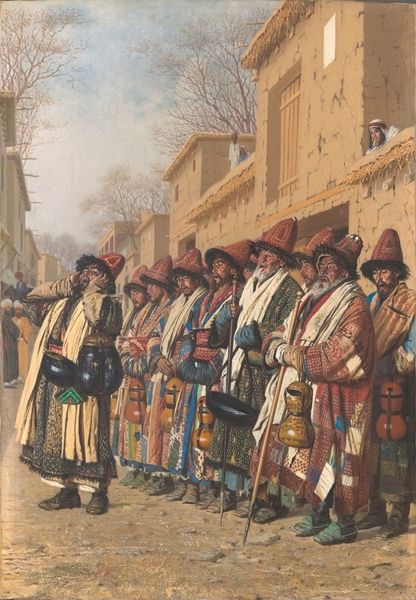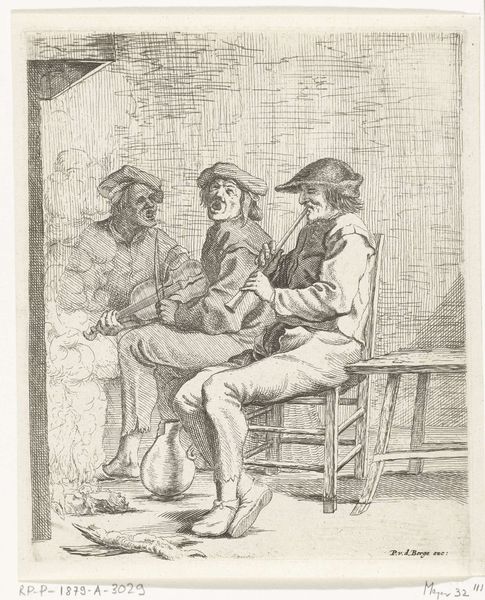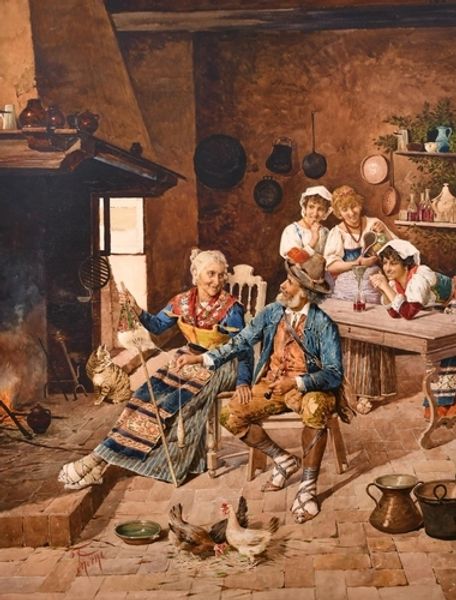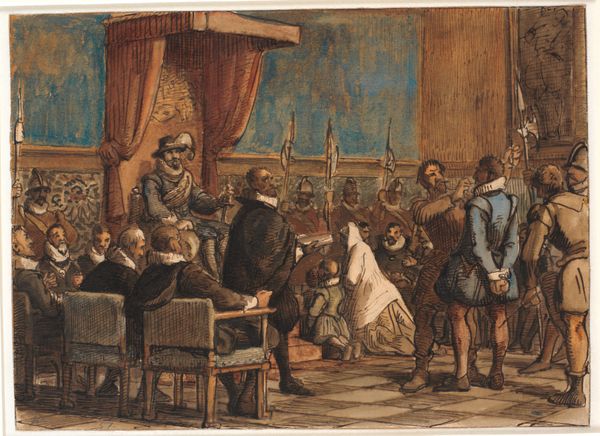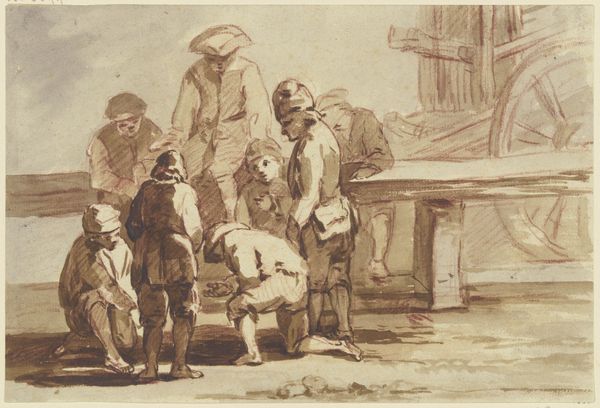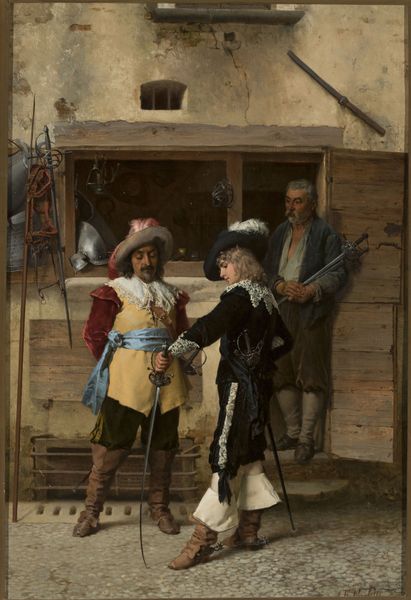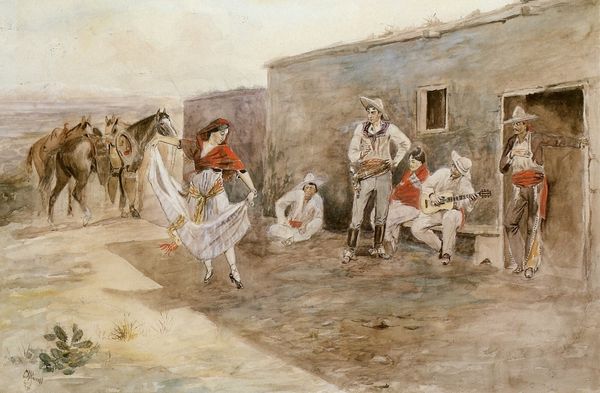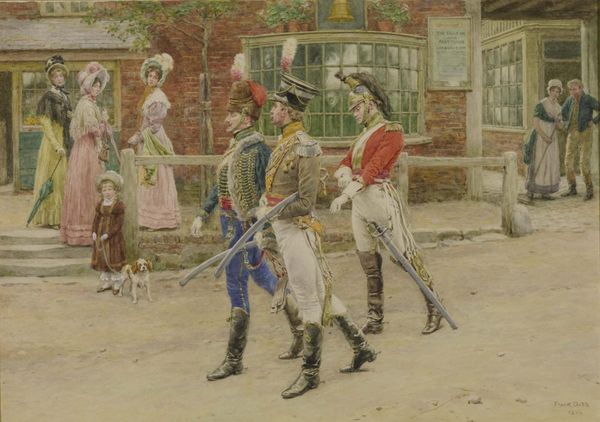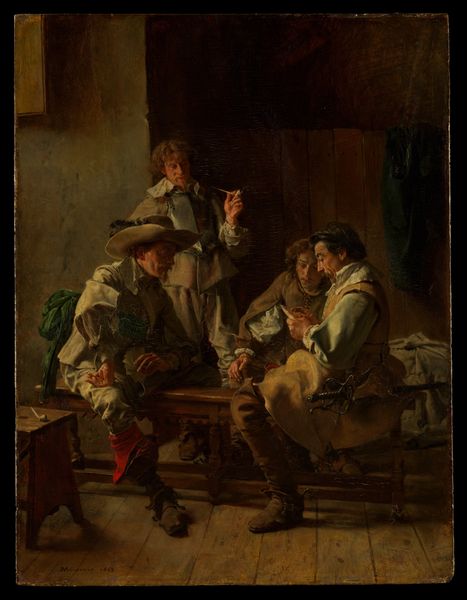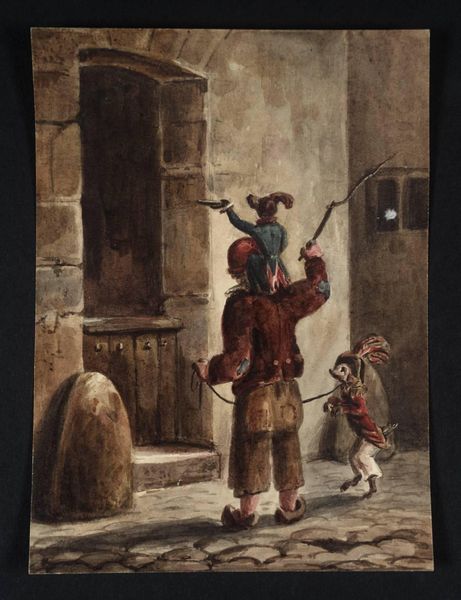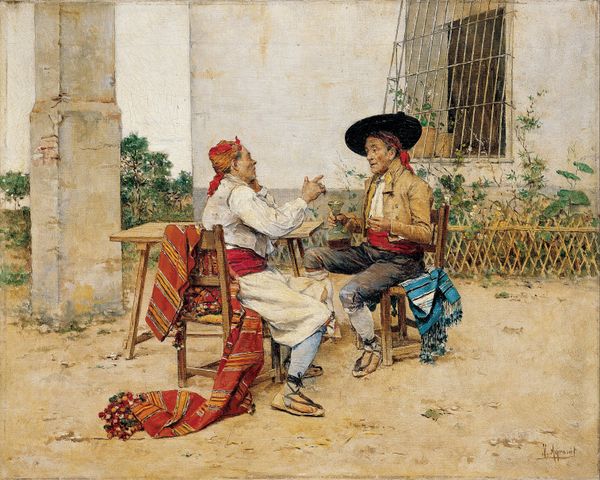
watercolor
#
portrait
#
impressionism
#
watercolor
#
watercolour illustration
#
genre-painting
#
watercolor
Dimensions: 48 x 31 cm
Copyright: Public domain
Curator: I find myself drawn to the subdued hues of this watercolour illustration, its atmosphere conveying a hushed expectancy amidst the violence it implies. There’s something incredibly haunting and poignant in its seeming quietude. Editor: Indeed. The artwork, titled "A rest during the bullfight", was created in 1881 by the Spanish artist Joaquín Agrasot. It's an interesting genre piece, capturing a moment of respite amidst the drama and spectacle of the bullring. It seems the piece offers us access to what is taking place behind the scenes, even beyond the bullfight itself. Curator: Right, there's this almost eerie tranquility to it. I can almost hear the quiet murmur of conversations. There's something very contemporary about how Agrasot seems to capture not the bullfight, but the in-between moments of that performance. Do you think there is something about contemporary culture that continues to inspire our fixation with such brutal performative activities? Editor: It's difficult to say if Agrasot’s work here might comment on this fixation you discuss. However, it is hard to ignore the work's relationship to portraiture, which historically tends to create lasting gazes on specific actors of our cultures, usually men. To focus the historical importance of portraiture on this piece, the work makes commentary about gendered power relations in late 19th century Spanish culture. Bullfighting, as a practice, does operate within similar hierarchies of power and gender. Curator: Hmmm, while I can see the artist using those tools, in portraiture and genre painting traditions, to signal masculine identity construction, I think the work's real pull lies in the sense of fleeting moments. We catch this pause, before those shown in the work will resume performing very carefully designed, sometimes violent and terrible, feats. Editor: That temporality certainly complicates it, doesn't it? Perhaps Agrasot encourages us to consider that identity itself, even power and brutality, is itself transient. A worthwhile idea that invites us to engage with his painting.
Comments
No comments
Be the first to comment and join the conversation on the ultimate creative platform.
